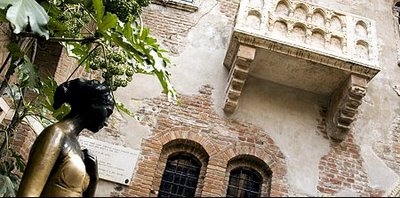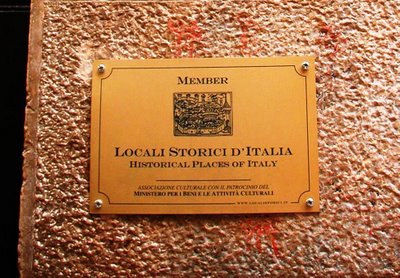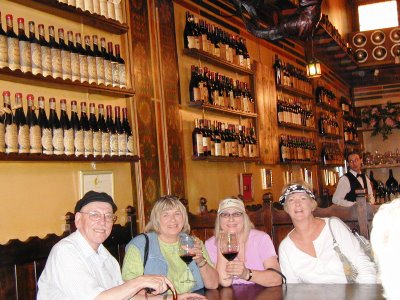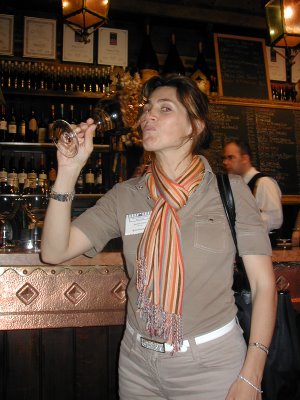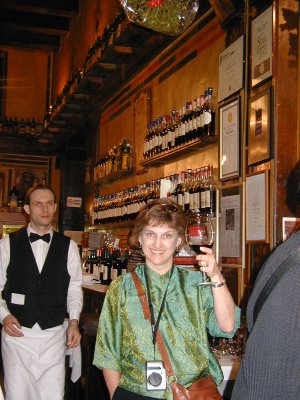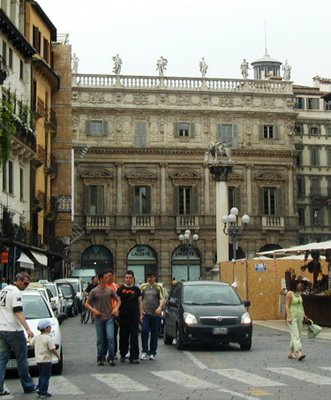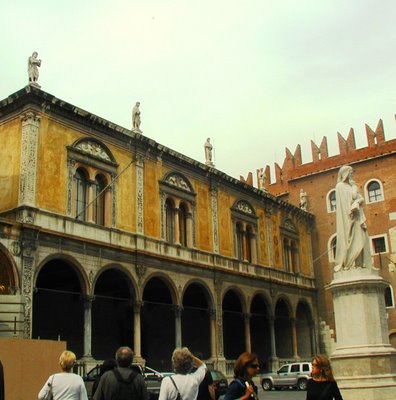Well, at least she's wearing one.
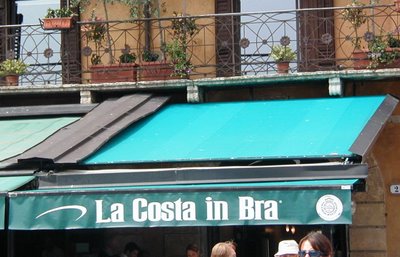
Verona's Piazza Bra (here's their webcam) is a big, full, beautiful... SQUARE, flanked by a Roman arena, fountains, statues, and a great restaurant and shopping area. Our guide Alberto told us "Bra" is derived from a word in the Veronese dialect that means "big wide open space."
This Roman gate flanks Piazza Bra. I believe those little brick projections on the top are called "crenels," and were for the archers to do their job with some protection. Clever design! (You'll see crenellated Roman walls all over Verona.)
This picture really doesn't do justice to the beautiful gate. The blocks of marble range from snowy white to a rose pink. Actually, glance around this beautiful city, and you'll notice a lot of that pink, thanks to the local marble known as "Rossa Verona." You'll see blocks of it used in the construction of the arena, which dates to the first century B.C.
Verona's arena is older and in better condition than Rome's Colosseum. The interior is in good shape, while a part of the outer wall still rises above the amphitheater. These are the four remaining arches of that outer wall.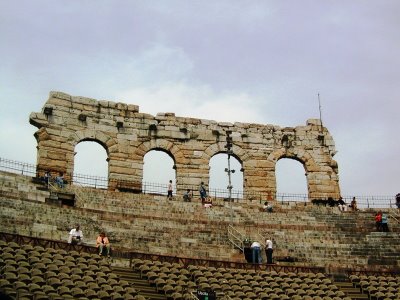
We we curious enough that we paid the entry fee to experience the interior of this imposing structure.
Imagine watching a show on the stage of an ancient Roman amphitheater! That's what happens every summer in Verona. Thankfully, it's no longer spectacles of gladiators and wild animals and rivers of blood. Instead, there are rock concerts, and operas. When we were there, we saw the massive set of Zeffirelli's "Aida" production right in front of the town hall, Palazzo Barbieri (below). It's right by the Arena, waiting to be moved to the stage.  Note: on Monday morning, Pacific time, I saw the Piazza Bra webcam showing the pharoah figure right outside the arena walls! The next staging of Aida is drawing close. Oh that we could be there for it! Maybe another opera trip?
Note: on Monday morning, Pacific time, I saw the Piazza Bra webcam showing the pharoah figure right outside the arena walls! The next staging of Aida is drawing close. Oh that we could be there for it! Maybe another opera trip?
Here's a link to the Arena's official website. It has some great pictures of the productions on the arena stage, and is really worth a look.
